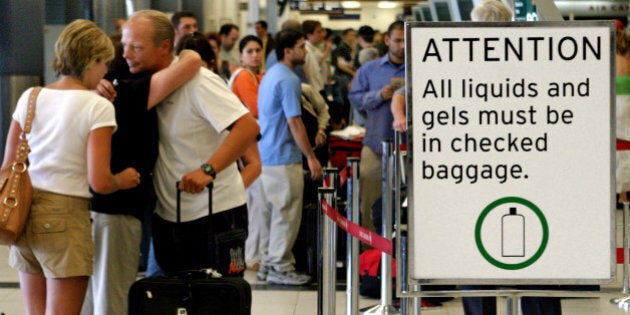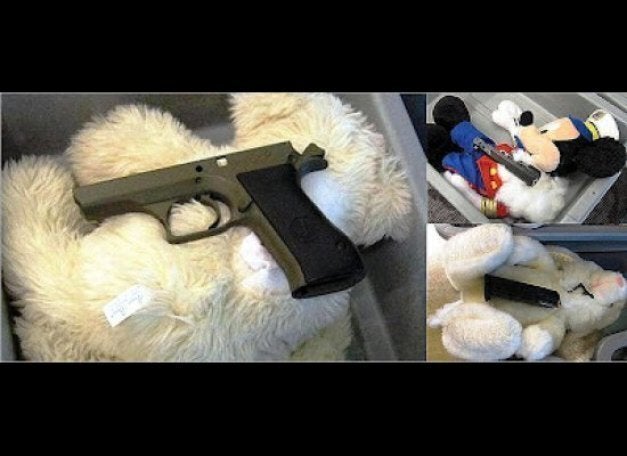
No more mandatory tiny bottles of shampoo. No further need for miniature toothpaste containers. No more worries about gels, aerosols and liquids in your carry-on luggage.
That's the reality travellers might see in 2016 thanks to new screening machines which could do away with the current restrictions on carry-on luggage.
The machines are expected to roll out at the end of January 2014 in Canada, the U.S. and Australia. They're part of a multi-phase plan to eventually end the restriction first imposed in 2006, according to documents from the International Civil Aviation Organization, a UN agency focused on aviation safety and one which Canada is a part of.
The machines will first be tested on items currently permitted on planes -- things like baby food and prescription medicine -- in order to see if they can detect the difference between baby formula and materials for a homemade bomb. Provided everything goes to the ICAO's plan, this could spell the end of a seven-year inconvenience for travellers, reports the Toronto Star.
Details on how the machine will detect dangerous substances are still scarce, but physicists already have designed a scanner to ID and catalogue liquids, aerosols or gels (LAGs). Dubbed the LS10, the high-tech scanner is approved in the E.U and could be used by the Transportation Security Administration in the States.
The idea is to use radio pulses to determine the material of a container. and then use ultrasound waves to scan the substance inside. In a matter of seconds, the container's chemical properties appear and are checked against a database of harmful items, reports Inside Science.
Currently, travellers in Canadian airports can only pack liquids, aerosols or gels in carry-on bags if they're in containers 100 ml/100 grams (3.4 oz) or less and fit in one clear, closed, resealable plastic bag no more than one litre in capacity, notes the Canadian Air Transport Security Authority.
Travelling with LAGs greater than the restricted amount often meant a second piece of luggage was necessary to carry things like toiletries. For the first few years, it was an easy workaround, until airlines started charging for checked baggage.
But the restrictions were never meant to be permanent, just “a temporary restriction to be lifted when suitable technology to screen liquids for explosives became readily available,” notes Canada.com.
Originally, the restrictions were put into place shortly after a failed terrorist plot to blow up several Transatlantic flights using liquid explosives disguised as drinks. The plot, originally hatched in Britain, targeted flights from London's Heathrow airport to cities including Toronto, Montreal, New York Chicago, Washington and San Francisco, according to the BBC.
Also on HuffPost
